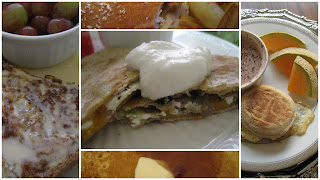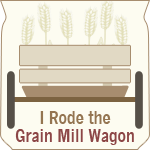There is nothing so frugal as taking something you would throw away, and instead turning it into something you can use. Like vegetable peelings, for example. Most people dump them in the trash or down the disposal, because, really, what else are you supposed to do with them? Or, for those green thumbs among us, they add them to the compost pile (which is an excellent option for anyone who can). However, there is another use for that miscellaneous collection of apple and carrot peelings that swirl down the drain to the hum of the disposal. I’m talking about stock.
No, not stock options; the kind of stock that is used to make broth or gravy or sauce. Normally, stock is made from the bones remaining after the rest of the meat has been cooked (a whole chicken, for example, or a bone-in roast). Some vegetables and seasonings are usually added to increase the flavor and nutritional content. Sometimes the word stock is used interchangeably with broth, but technically, stock is made from bones while broth is made from the actual meat. Most people purchase their broth in boxes, cans, or cubes at the grocery store and use it in any recipe that calls for stock or broth.
Purchasing broth, however, is neither healthy nor cheap. Most varieties of store-bought broth contain MSG, a major no-no for anyone interested in more healthful foods. In fact, most store-bought broths contain a lot of sodium, period, more than any person needs for good health. On top of that, I find store-bought broth to be rather expensive, especially considering I can make it for nothing at home.
Yes, you heard me. Nothing. Nothing comes from nothing, you say? I beg to differ! Remember those vegetable peels I was talking about? Instead of swirling them down the drain, put them to good use. If you have some left-over meat with bones, so much the better, but they’re not absolutely necessary.
I know, I know, it sounds disgusting. But it’s not, I promise. (Well, it is better if you leave out the potato/sweet potato peels because they add a really earthy kind of flavor that you may not like.) But we all know that the peel of vegetables and fruits usually contain high concentrations of nutrients, sometimes more than the fruit or vegetable itself. Unfortunately, they are often hard to chew, or don’t work well with the dish we are making: putting them in a broth solves that problem and makes good use of the hidden nutrients.
Making vegetable stock is more of a procedure than a recipe. It requires 3 main categories of ingredients, and an optional fourth (which takes it from vegetable stock to meat stock). There are a variety of methods and ways people choose to make their stock, but this is what I do. Do as I do, or do a quick google search and find some more ideas. Whatever you do, don’t throw away those vegetable peels! They’re valuable!
Making Vegetable (or Meat) Stock: A Basic BluePrint
I.Vegetable Peelings
Whenever I peel vegetables and fruits, like apples and carrots, I save the peels in a freezer-safe container or bag. Once I have about 4 cups worth, I am ready to make my stock. For the healthiest stock, use organic produce, but if that’s not always an option for you (it’s definitely not always an option for me, unfortunately), consider using only the skins from the “clean fifteen“. Or at the very least, scrub and wash the non-organic produce very well before using the skins.
I tend to use a lot of carrots and apples, so those peels are often in my stash, but the possibilities are endless. Really, pretty much any root vegetable is perfect for the task. Wilted lettuce leaves are great additions. Cores and ends of most produce can also be used. I always try to have some celery and celery leaf, as well as onion and garlic (including skins) on hand, because they add so much flavor to the stock. I’ve even heard of people using remnants like avocado pits in their stock… pretty much anything goes, it seems! I do avoid including potato peelings, as I mentioned above, and citrus peelings because they tend to add bitterness.
II. Water
I use 6-8 cups of water for every 4 cups of vegetable peels.
III. Seasonings
The sky’s the limit as far as creativity here, but generally speaking, I use a bunch of peppercorns, a few allspice berries, several whole bay leaves, and salt to taste. Depending on my mood, I might add a bit of rosemary, thyme, or other herbs that I like. If I don’t have actual celery or onion, I’ll add celery seed or granulated/dried onion. I also love to throw a bit of dried lemongrass into my stock as well.
IV. Meat Bones (optional)
Whenever I prepare bone-in meat (such as a whole chicken or turkey, or a bone-in roast beef or even pork), I save the bones and freeze them just like the vegetable peels. Then when I have enough ingredients in my stash, I add the bones to the above ingredients and proceed as normal.
Procedure
Stock can be made on the stove top or in the slow cooker. The slow cooker is my favorite, but if I dont’ have time to wait for it, or it’s being used for something else, I’ll use the stove top method.
Place the vegetable peels (and bones if using) in a large stock pot, or in a slow cooker. Add water and seasonings. For the stove top method, bring to a boil. Once boiling, reduce to a simmer, and allow to simmer for an hour or so. For the crockpot method, I like to use the “low” setting for 6-8 hours. I find mine gets too hot if I use the high setting, so I prefer the low.
Once the stock has simmered and reached its full flavor potential (taste tests may be required. Add seasonings as needed.), drain through a colander into a bowl. Allow the broth to cool before storing in the refrigerator. (For meat stocks, there is no need to scrape off the fat before refrigerating, as some stock recipes direct. Traditionally, the fat is removed just before using in the recipe, which is easier, anyway, because at that point, the fat will be solid and easily removed.)
Uses
If I’m going to use this stock for broth in a soup, I doctor it up if necessary with some seasoning first. But I don’t hesitate to use it for any other purpose that broth and stock are typically used for, especially sauces and gravies, or in casseroles.
Storage
I store my stock in canning jars or pitchers in the fridge. I try to use them within 2 weeks, although I think their shelf life is longer than that.
It may not be as QUICK as stirring granules into hot water, or pouring from a can, but you have to admit the hands-on time is minimal. If you use the slow cooker, you can either make your broth during the day or overnight, and very little is required from you in the way of preparation.
Isn’t that so EASY? I personally think it’s one of the easiest steps a person can take into creating a more frugal and healthy lifestyle.
It’s definitely CHEAP - I don’t think anyone can argue with me there. Pretty much as cheap as it gets.
And so HEALTHY, too. As we’ve already discussed, using up those peels, cores and ends allows us to make full use of a vegetable’s health potential. Using bones also adds calcium and other minerals, very necessary in a healthy diet. Extra bonus - no MSG, and only as much sodium as is needed to taste, which I guarantee is not as much as they put in those cans.












